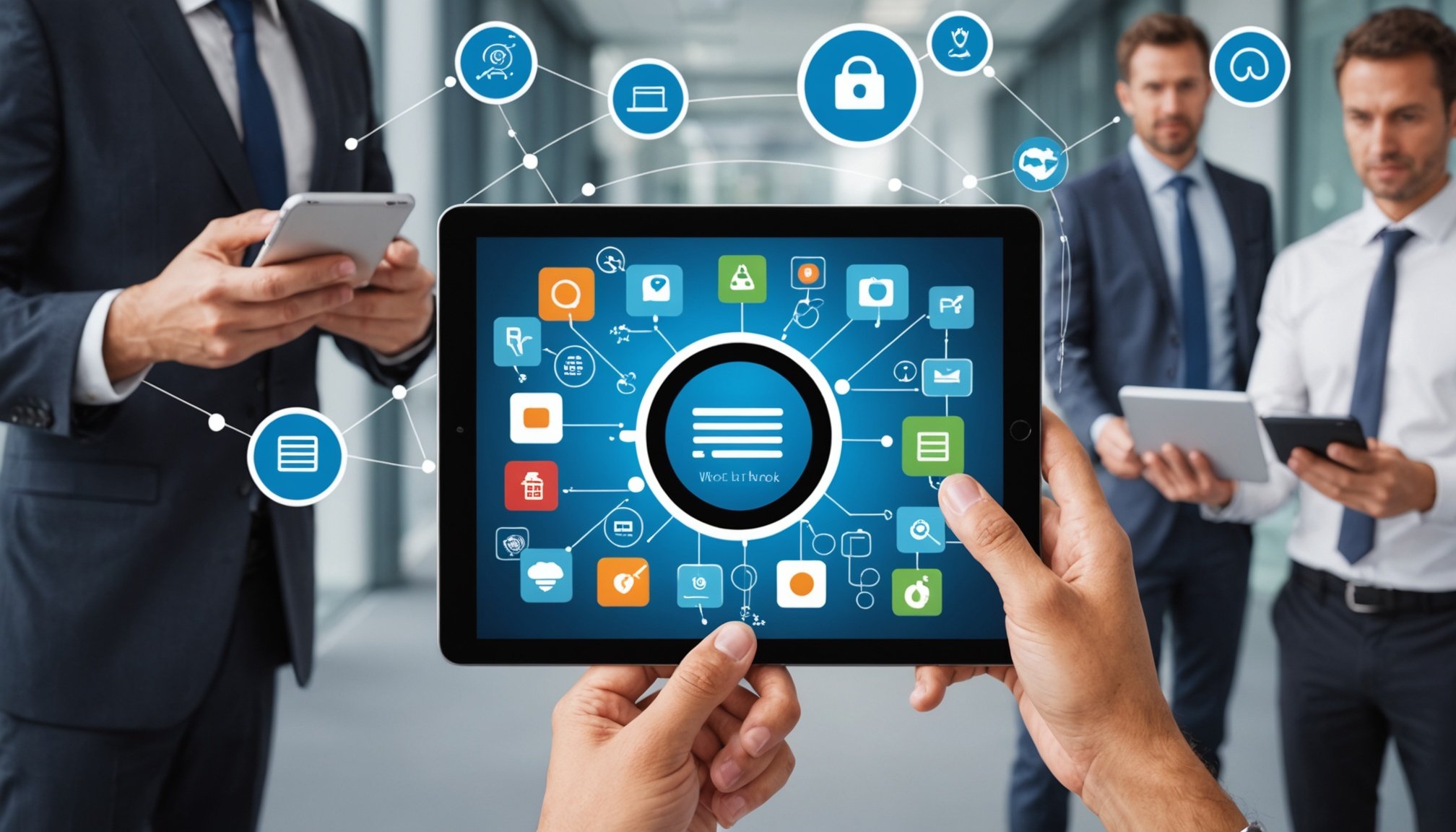Understanding Multi-Device Management
Navigating the complexities of multi-device management is crucial in today’s connected world. It involves overseeing and controlling multiple devices, such as smartphones and tablets, within a singular tech ecosystem. Management is essential as it optimises productivity, ensuring seamless communication and integration across devices.
The integration of smartphones into a technology ecosystem offers tangible benefits. Smartphones act as central hubs, enabling remote access and control of other devices, hence streamlining tasks. They facilitate centralised management, permitting users to execute updates and changes efficiently, thus reducing time spent on manual interventions.
Also to discover : Master Remote Desktop Access: Ultimate Techniques to Unlock Your Smartphone Seamlessly
However, managing multiple devices comes with its set of challenges. Users often encounter compatibility issues, where devices from different manufacturers may not sync smoothly. Security risks also pose significant concerns, highlighting the need for encryption and robust security protocols to protect sensitive information.
To mitigate these challenges, maintaining a cohesive system is vital. Regular updates, security checks, and ensuring device compatibility are steps that can alleviate some of these issues. Encouraging users to explore device management solutions can enhance their control over this connected world, fostering a seamless technological experience. A more integrated approach to multi-device management can lead to improved productivity and a superior user experience.
Also to read : Transform Your Space: Harness Your Smartphone to Build a High-Tech Home Fitness Zone
Tools and Apps for Multi-Device Management
In the digital era, Device Management Tools play a pivotal role in syncing gadgets in a tech ecosystem. These tools ensure smooth operations and centralised control across devices, making life simpler.
Overview of Popular Apps
Selecting the right apps is crucial for effective multi-device management. Integration Software like AirDroid, Your Phone, and Pushbullet are popular among users for managing smartphones within an ecosystem. AirDroid offers comprehensive remote access features but may suffer from occasional connectivity issues. Your Phone provides seamless integration with Windows but is limited to Android devices. Meanwhile, Pushbullet excels in notification management but comes with a slightly complex setup process.
Feature Comparison
When evaluating these tools, consider their compatibility across devices and unique offerings. Key features to examine include cross-platform support, file-sharing efficiency, and notification synchronisation. Paid versions of these tools often provide advanced features and premium support, while free versions offer basic functionalities. A thorough comparison of these aspects helps in assessing value for money.
Emerging Technologies
Emerging innovations in device management increasingly leverage automation and AI. These technologies aim to optimise the management process, enhancing productivity. Future trends point towards more intuitive solutions, further simplifying smartphone integration into multifaceted tech ecosystems.
Best Practices for Efficient Management
Efficiency in managing multiple devices is crucial for maintaining a seamless tech ecosystem. By establishing a coherent workflow across devices, productivity can be significantly enhanced. Integrating smartphones as part of this ecosystem allows for streamlined communication and task management, ensuring that users can move effortlessly between tasks without interruptions.
Regular maintenance and updates play a pivotal role in optimal device performance. Keeping software up-to-date not only improves efficiency but also addresses potential security vulnerabilities. This proactive approach minimises downtime and enhances the reliability of the entire system. It is also vital to customise settings across devices, tailoring them to personal preferences for a more intuitive user experience.
By optimising settings and device interactions, users can personalise their tech environment, making daily tasks easier and more enjoyable. Customisation options like adjusting notification settings, interface layouts, and accessibility shortcuts can significantly improve user satisfaction and efficiency. Implementing these best practices provides a robust framework for managing complex tech ecosystems, ensuring that all devices function cohesively, thus reducing stress and increasing productivity.
Troubleshooting Common Issues
Managing multiple devices can be smooth, but technical hiccups are inevitable. Troubleshooting common issues early can prevent bigger headaches later.
Identifying Common Problems
Frequent issues like connectivity glitches or software integration failures can disrupt workflow. For instance, connectivity loss might stem from network congestion or outdated drivers. Software mismatches often occur when device and application versions are incompatible. Using up-to-date software and checking network settings regularly can mitigate these disruptions.
Seeking Technical Support
When should you seek help? If problems persist after basic troubleshooting, reaching out is wise. Reliable tech support resources include manufacturer websites, FAQs, and official support channels. Community forums and user groups offer collective wisdom and shared experiences, often providing solutions for specific device issues.
Case Studies of Successful Implementations
Explore how businesses have efficiently tackled these challenges. One case study might detail a company that unified its multi-device management by syncing all devices with a central server, solving integration issues and improving communication. Such implementation strategies provide valuable lessons in overcoming technical barriers, ultimately enhancing system reliability. Real-world examples demonstrate successful navigation of common challenges, offering insights and strategies for better ecosystem control.
Real-world Applications and Case Studies
Real-world applications of multi-device management demonstrate its effectiveness in both personal and professional spheres. Businesses that leverage smartphone integration within their tech ecosystems often see improved communication and operational efficiency. A case in point is how companies utilise smartphones for seamless coordination, resulting in faster decision-making processes and enhanced team collaboration.
Incorporating a robust multi-device setup can significantly boost personal productivity. Individuals who integrate their smartphones with other gadgets manage tasks more efficiently by maintaining consistent access to their professional and personal data. For example, transitioning smoothly between devices without workflow interruption allows for time savings.
Implementation strategies vary, but they frequently include the adoption of comprehensive tools for syncing and managing device networks. A notable strategy is the use of tools that offer centralised device control, facilitating easier updates and security management. Businesses also concentrate on training employees to maximise device use, reducing technical issues and encouraging effective device interaction.
Key takeaways from these applications highlight the importance of a strategic approach to multi-device management, focusing on reducing fragmentation and aligning device capabilities with organisational goals. Both businesses and individuals gain from establishing bespoke ecosystems that cater to their specific connectivity and productivity needs.
Enhancing Productivity with Multi-Device Management
In an era where productivity enhancement is paramount, effectively managing your multi-device ecosystem can dramatically improve workflow. Harnessing the potential of technology requires strategic management and synergy among various devices to streamline tasks and boost efficiency.
Integrating Work and Personal Devices
First, consider integrating work and personal devices to create a cohesive tech environment. This integration involves strategically using hybrid device utilization techniques to balance work and life. By utilizing specific tools designed for communication across devices, such as syncing applications and common interfaces, users can ensure seamless device interactions. This approach not only simplifies multi-device management but also encourages a more flexible and efficient working style.
Time Management Techniques
Maximizing productivity through advanced time management techniques is essential. Implementing tools like coordinated calendars and reminders helps synchronize tasks and priorities across devices, making task management more intuitive. Furthermore, balancing notifications is key to minimizing distractions, allowing users to focus on essential tasks without unnecessary interruptions and fully leverage their interconnected tech ecosystem.
Setting Up a Personal Ecosystem
For an optimally integrated personal tech ecosystem, carefully sync applications and data across all devices. Personalisation comes into play as one tailors settings to enhance user experience, ensuring each device function aligns with individual preferences. Such setups foster a seamless experience, empowering users to deftly navigate between devices and manage tasks with ease.











